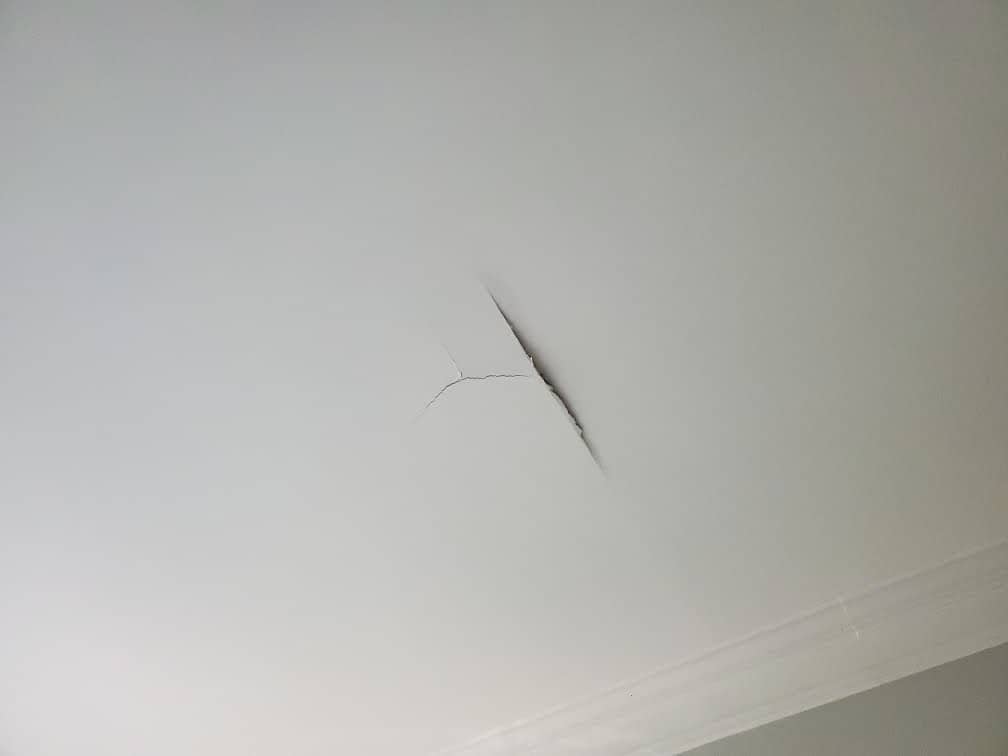A Comprehensive Guide to Mastering Drywall Repair Service and Installment
This guide provides a detailed expedition of drywall repair service and installment, catering to both beginners and experienced specialists. It lays out crucial tools, strategies for patching and hanging sheets, and the essential finishing processes. drywall contractors. By understanding typical risks, people can accomplish sleek results. Understanding these skills not only boosts one's home however likewise develops self-confidence in DIY ventures. What fundamental pointers will ensure an effective project throughout?
Essential Tools for Drywall Repair and Setup
When beginning on drywall repair service and setup, a few essential devices can greatly enhance the performance and high quality of the work. A drywall knife, commonly available in numerous dimensions, is important for applying joint compound and smoothing seams. A taping knife is also essential for feathering edges and guaranteeing a smooth surface. In addition, a drywall saw or energy blade permits exact cutting of drywall sheets to fit any kind of room.

Step-by-Step Guide to Patching Holes
Covering holes in drywall is a simple procedure that can bring back the wall's look and honesty. To start, the location around the opening need to be cleaned up and any kind of loose particles got rid of. For small holes, a simple spackle or joint compound can be applied with a putty knife. Larger holes may need a spot; a piece of drywall can be reduced to fit the hole, safeguarded with adhesive or screws, and afterwards taped around the edges. As soon as the spot remains in area, joint compound is used over the patch and feathery bent on mix with the bordering wall. After the compound dries out, fining sand is essential to accomplish a smooth finish. The fixed location can be topped and painted to match the remainder of the wall. This method guarantees a seamless repair service, boosting the overall appearance of the drywall and preserving its structural honesty.
Strategies for Hanging Drywall Sheets
After efficiently repairing holes in drywall, the next action includes hanging new drywall sheets to create a smooth surface. To accomplish this, one should begin by measuring the wall surface space precisely and reducing the drywall sheets to fit. It is crucial to hang the sheets horizontally for better architectural honesty, beginning with the top and working downwards.
Using a drywall lift can streamline the process, specifically for ceiling setups. When placed, protecting the sheets with drywall screws at periods of about 12 inches along the sides and 16 inches in the field is vital. This ensures a firm hold and lowers the danger of drooping. For edges, the sheets must be reduced to fit well, permitting cleaner joints. Ultimately, it get more info is advisable to startle the joints in between sheets to strengthen the total structure, developing a more sturdy coating ready for the following stage in the drywall setup process.
Completing Touches: Insulation and Mudding
Completing the drywall installment involves the vital steps of mudding and taping, which assure a smooth and polished coating. Taping requires the application of joint tape over the seams in between drywall sheets. Drywall Installation Ogden Utah. This tape can be either paper or fiberglass mesh, with each type offering one-of-a-kind advantages. After taping, the next step is mudding, where joint compound, or "mud," is related to cover the tape and load any blemishes
Making use of a drywall knife, the substance must be spread equally, making certain a feathery side to minimize noticeable changes. Several layers are typically essential, with fining sand in between each layer to attain a seamless surface. Careful focus during this procedure is crucial, as it significantly influences the final look of the wall. With the ideal strategy and persistence, completion result will be a remarkable structure ready for paint or ending up touches.
Common Blunders to Prevent in Drywall Projects

One more typical error is not enabling enough drying time in between coats, which can catch wetness and jeopardize the surface. Furthermore, overlooking to feather the sides appropriately can develop noticeable lines and blemishes. Skipping sanding or making use of inappropriate strategies may leave rough spots. By being mindful of these challenges, individuals can substantially improve the high quality of their drywall jobs and accomplish a professional-looking finish.
Regularly Asked Inquiries
Can I Repair Drywall Without Professional Assist?
Yes, one can repair drywall without specialist assistance. With the right devices, products, and assistance, people can effectively manage small repair work. However, substantial damage may need expert proficiency for ideal results and longevity.
For How Long Does Drywall Substance Require To Dry?
Drywall substance commonly takes in between 24 to two days to completely dry totally, depending upon variables such as humidity and temperature level. Thinner layers might dry quicker, while thicker applications require even more time for ideal outcomes.
What's the Finest Sort Of Paint for Drywall?
The very best kind of paint for drywall is typically a water-based latex paint. It supplies outstanding protection, resilience, and ease of application, making it ideal for indoor wall surfaces while permitting very easy cleaning with soap and water.

Just how Do I Stop Mold And Mildew on Drywall?
To avoid mold on drywall, assurance correct air flow, control humidity degrees, make use of mold-resistant materials, and without delay address any type of leakages. Routine assessments and immediate removal of water damages are also important for long-term prevention.
Is Drywall Recyclable After Elimination?
Drywall is recyclable after removal, supplied it is without impurities like mold and mildew, paint, or other dangerous products. Recycling facilities can refine it into brand-new items, promoting sustainability and reducing land fill waste in construction.
When starting on drywall fixing and installment, a few necessary devices can substantially improve the effectiveness and high quality of the job. After successfully repairing holes in drywall, the next action entails hanging new drywall sheets to create a seamless surface. Finishing the drywall installation includes the important steps of mudding and taping, which guarantee a smooth and polished coating. Attaining a sleek surface in drywall projects can be challenging, and several typical mistakes can threaten the quality of the job. Yes, one can repair drywall without expert aid.